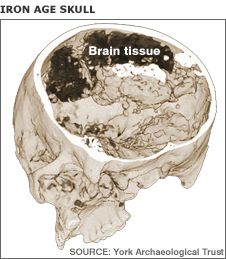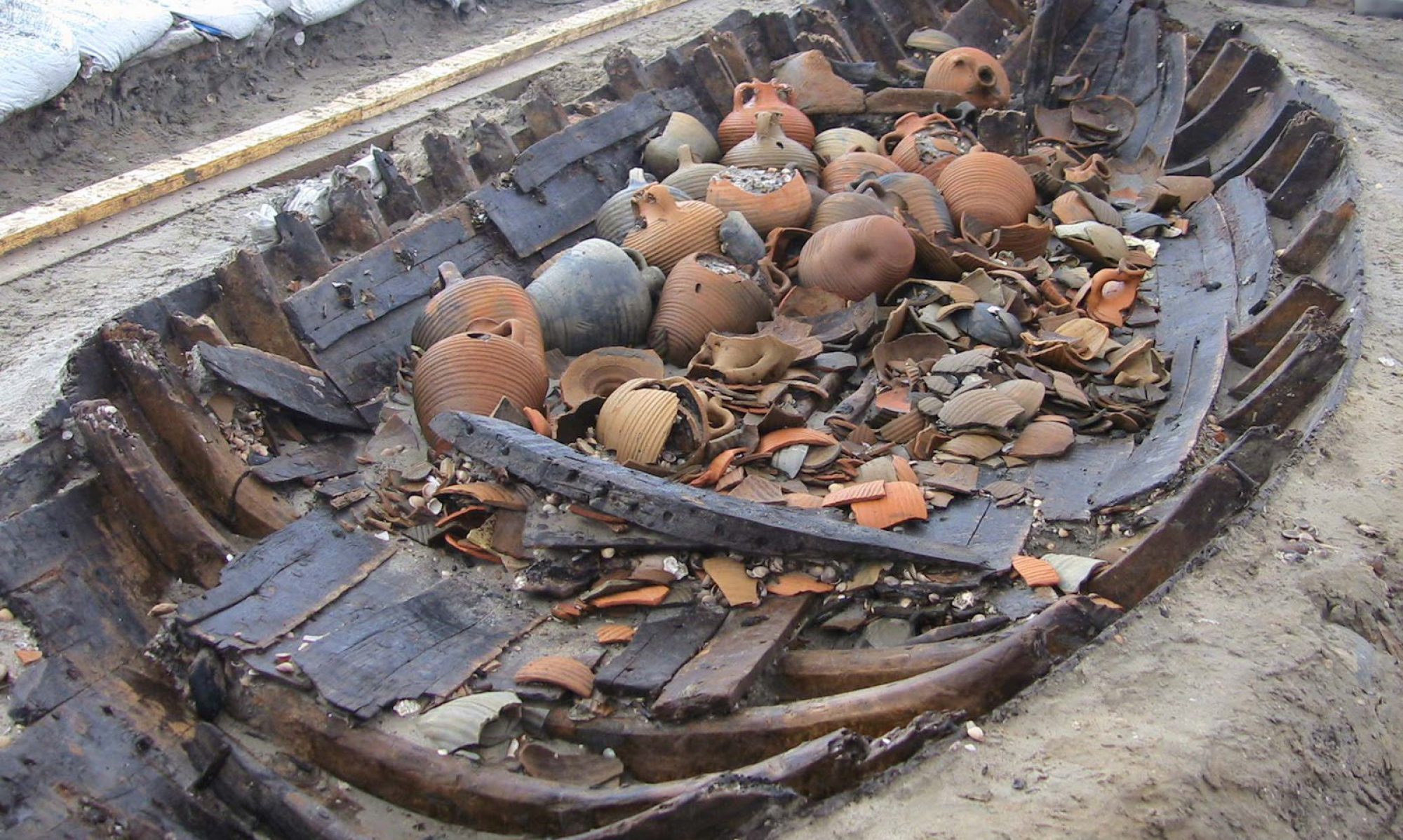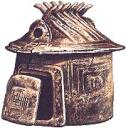The Etruscans originated in central Italy around 900 BC and were absorbed into the Roman Empire in the 80s BC. During the first millennium BC, they developed the earliest complex society in Italy. In common with other Mediterranean civilizations of their time, the Etruscans lived in city-states, had a specialized agricultural and craft economy, and exchanged goods and ideas with their neighbors. Distinctive to the Etruscans was their religion, social and political structure, and language. There is a wealth of archaeological evidence for Etruscan settlements, economy, society, and culture, including the remains of cities, towns, cemeteries, and everyday objects.
IRON AGE
The traditional Etruscan territory in central Italy is delineated by the Tyrrhenian Sea in the west, the Apennines in the east, and the Arno and Tiber Rivers to the north and south. The Etruscan civilization arose out of the culture and society that developed in this area during the Late Bronze Age (1300-900 BC) and Iron Age (900-700 BC). During the Iron Age, the roots of Etruscan cities, economy, religion, and language were established.
Settlements
Most of the great Etruscan cities of later times originated as villages in the Iron Age. In southern Etruria, Iron Age villages usually were situated on volcanic tufa plateaus (Veio, Cerveteri, Tarquinia, Vulci, and Orvieto). In central and northern Etruria, villages more often were built on isolated hilltops dominating the sea or inland waterways- Populonium (modern-day Populania), Vetulonia, Volterra, Chiusi, Cortona, and Arezzo. Small farms and hamlets surrounded Iron Age villages. Excavations at Volterra, in northern Etruria, provide archaeological evidence for early settlement patterns in one Etruscan city. During the Iron Age many small villages coexisted on the Volterran hilltop, placed wherever there was relatively flat land and a spring to provide water. Roadways leading into the countryside radiated out from the hilltop in every direction. Along these routes several burial areas developed. Excavations at Tarquinia, in southern Etruria, have recovered evidence for Iron Age dwellings. Two kinds of huts were found in the Iron Age village: larger oval or rectangular huts, approximately 13 by 7 meters, that could have housed an extended family and smaller huts, approximately 5 by 4 meters, that could have housed a nuclear family. The area between the huts may have been used for growing small cottage gardens and keeping animals and poultry. Drainage channels carried rainwater away from the dwellings and into a central cistern. Iron Age huts were built on foundation trenches cut into soil or rock. Exterior timber posts were set into holes in the foundation, to support the thatched roof. Walls were made of wattle screens woven from reeds and branches and covered with daub (clay). The door usually was placed at the short end of the structure and sometimes was protected by a small porch. Inside the hut was a central hearth, circular in shape. The interior may have been divided by a screen into a front and a back room.
Cemeteries
Iron Age cemeteries were located outside villages, usually on surrounding hillsides. During the ninth century BC, most individuals were cremated and their ashes placed into decorated pottery urns. The urns were buried, along with modest grave goods, in tombs cut into soil or rock. Toward the end of the Iron Age new burial customs emerged in central Italy, interpreted as evidence of the development of an aristocracy. By the eighth century BC, a few rich burials appear among many more common ones, distinguished by their more numerous and expensive grave goods, especially fine metalwork.
Language and Religion
During the Iron Age a common culture developed among the residents of Etruria. The Etruscan language and religion were among the most significant elements in the culture. Etruscan is not an Indo-European language and is not related to the languages of neighboring Italic peoples. The Etruscans learned the alphabet from Greeks who settled in southern Italy and used it to write down their own language. The first texts written in Etruscan date to the end of the Iron Age, around 700 BC. The Etruscan religion, as we know it from the historical period, incorporated early cult practices from the Iron Age. The Etruscans believed that divinities determined the course of events in the human world. Etruscan worship took place in sacred groves, caves, and springs, where divinities were thought to reside. The role of Etruscan priests was to learn the will of the gods and then to follow the appropriate rituals and sacrifices. Individual worshippers asked for divine favor by sacrificing animals for the gods, offering them food or drink, or giving them other gifts. A spring at Banditella, near Vulci, was a sanctuary as early as the Middle Bronze Age (seventeenth century BC) into Etruscan times, indicating the continuity of religious practices from prehistory into the historic era.
Economy
The Iron Age economy was largely self-sufficient: each Etruscan village produced everything it needed. Agriculture was the foundation of the economy. Farmers grew cereals, legumes, fruits, nuts, and vegetables and raised sheep, goats, and pigs. Villagers also hunted, fished, and gathered in nearby woods and waters. Most tools, utensils, clothing, and other goods were made by each household for its own use. Certain specialized and luxury items were produced in Etruria and distributed throughout central Italy, the Mediterranean, and north of the Alps. By the Iron Age, a specialized metal industry already existed in Etruria. Metals were mined from the Colline Metallifere, or “metalbearing hills,” and fashioned into metal objects in nearby Populonium and Vetulonia. In exchange, luxury objects were imported from Greece, Phoenicia, and Sardinia.
Society
By the end of the Iron Age Etruscan society probably included several classes, linked through patron-client ties. Farmers met their own needs and also produced goods and labor for petty chiefs. In exchange, the petty chiefs provided their clients with protection, communal works, and foodstuffs. The petty chiefs, in turn, were clients of paramount chiefs, who redistributed foodstuffs and prestige goods regionally.
BOOKS OF INTEREST
Banti, Luisa. Etruscan Cities and Their Culture, 1973.
Barker, Graeme, and Tom Rasmussen. The Etruscans, 1998.
Boëthius, Axel. Etruscan and Roman Architecture, 1970.
Brendel, Otto J. Etruscan Art., 1995.
Cornell, T. J. The Beginnings of Rome: Italy and Rome from the Bronze Age to the Punic Wars, c. 1000-263 BC. 1995.
Haynes, Sybille. Etruscan Civilization: A Cultural History.
Macnamara, Ellen. The Etruscans, 1991.



You must be logged in to post a comment.